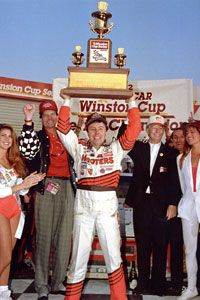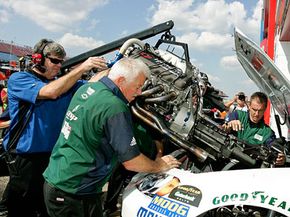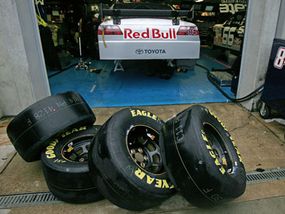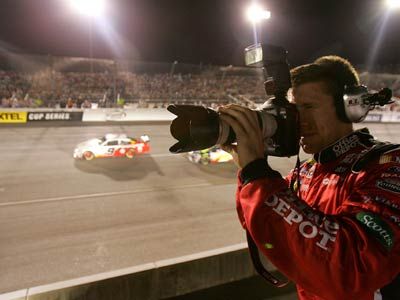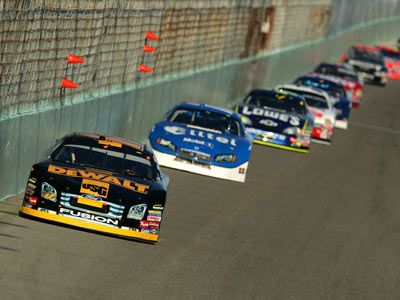NASCAR is the number one spectator sport in the United States and televised NASCAR races are broadcast in more than 150 countries and 30 languages worldwide [source: NASCAR]. This multi-billion-dollar industry can track its humble beginnings to the dirt race tracks of Florida and North Carolina in the late 1940s.
The original NASCAR drivers were true stock cars, meaning they were no different than the family sedans being driven on American highways. They were lumbering Oldsmobiles, Buicks, Chryslers and Fords that had improvised seat belts, no protective roll cages and standard-issue tires that would blow out regularly [source: NASCAR].
Advertisement
A lot has changed in 60 years. About the only thing that modern NASCAR race cars have in common with street-legal automobiles is that they both have four wheels and an engine. The NASCAR racer of today is a custom car in every sense of the word. Every inch of it is finely tuned, obsessively engineered and built for speed.
The price of winning at NASCAR has gone up exponentially in the past 20 years. Gone are the days of Alan Kulwicki, who won the 1992 NASCAR championship on a measly $2 million annual budget. Today's top racing teams command budgets of well over $20 million a year [source: Clarke].
The biggest chunk of these bulging budgets is earmarked for the construction, maintenance and upgrades of an entire fleet of race cars. One NASCAR racer costs a pretty penny, but most championship racing teams keep 14 to 20 cars in racing condition at all times.
Traditionally, a healthy percentage of the racing budget was consumed by research and development in the constant quest to build a better racer. All of that might change with the recent introduction of the Car of Tomorrow (CoT), NASCAR's effort to improve driver safety and cut costs by requiring all Sprint Cup race teams to use cars with the exact same set of specifications.
Already some team owners are saying that the CoT, while more expensive to build up front, will allow them to cut a significant amount out of their research and development budgets and lower their fleets from 20 race cars to 12 [source: Ryan]. That's because the CoT, unlike traditional racers, is designed to drive in all track conditions (short, long or fast, for example).
In the next section, we'll break down a NASCAR Sprint Cup race car by its engine, chassis and tires to see exactly how much one of these bad boys costs.
